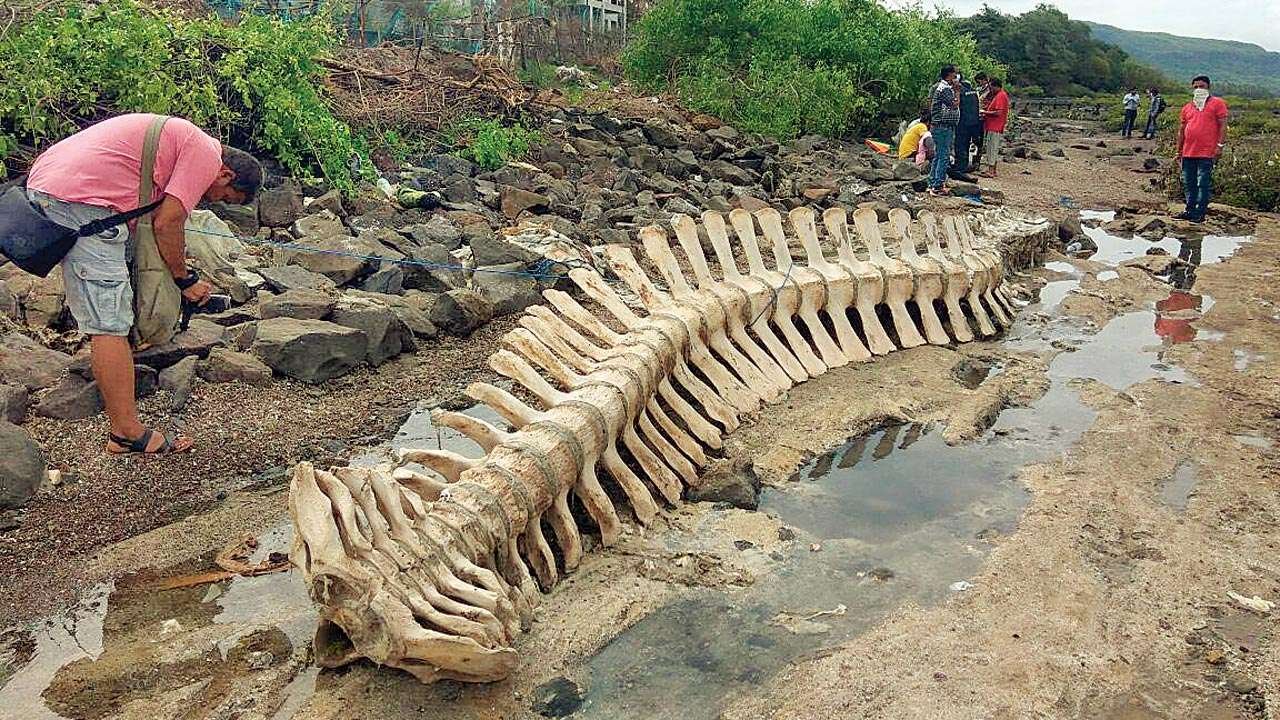The skeletal frame will be displayed at the Coastal and Marine Biodiversity Centre (CMCB), Airoli.
Maharashtra State Mangrove Cell's decision to retrieve the skeleton of the mammoth 43-ft-long blue whale, which washed ashore on June 14 near Uran, finally saw success on Monday. The skeletal frame will be displayed at the Coastal and Marine Biodiversity Centre (CMCB), Airoli.
As per JR Gowda, Deputy Conservator of Forest, Mangrove Cell the team working on ground managed to separate and completely clean an almost 40-ft-long vertebra portion along with the skull and ribs from the decomposing carcass.
Makarand Ghodke, Assistant Conservator of Forest (ACF), Mangrove Cell, who pulled off this challenging task said that around 100 labourers physically carried the vertebral portion for almost two kilometres to the nearest motorable road and loaded it on a trailer by around 5 pm after which it was brought to Airoli late on Monday night.
"After the beaching, it was decided that we should try and preserve the skeleton. A team of 20 specialists from Alibaug on Saturday were given the task of clearing out the flesh. The biggest issue was the tide as the work had to be stopped during the high tide and while on Saturday, the team could only work for a couple of hours, on Sunday they worked for eight hours and the remaining work of cleaning the skeleton was carried out on Monday," he said, adding that all the flesh, most of which had decomposed, was safely buried in a four-feet-deep pit dug around 10 metres away from the spot on Sunday, where the whale was first found by the local fishermen on Thursday.
"Since the entire area is a rocky beach, the carcass could not be buried in one go. In addition, the area being non-motorable, no excavator or trailer could be brought at the site to carry it away. Plans to drag the whale tied with ropes using boats was risky too, due to the extremely choppy sea and thus the decision to retrieve the skeleton and dispose the flesh in a smaller pit was taken," he said.
PRESERVING NATURE
As per senior officials, the skeleton of the blue whale, which is known to be the largest mammal on earth, will now be kept at the Coastal and Marine Biodiversity Centre (CMCB) in Airoli and the cartilage will be allowed to disintegrate after which the process of preserving it for display will be initiated.








